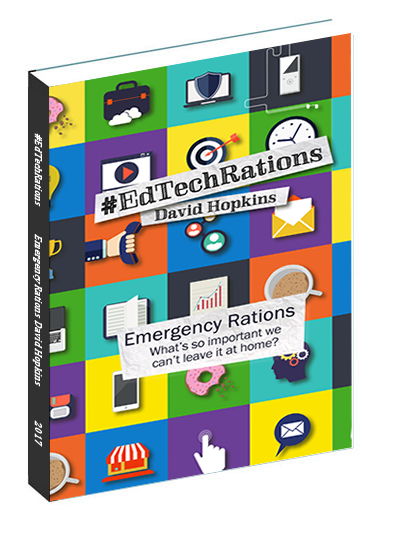Google Wave in education
 Continuing on from my first post on Google Wave: “What is Google Wave?” I’ve been finding and reading (and printing, sorry trees) a fair bit of information.
Continuing on from my first post on Google Wave: “What is Google Wave?” I’ve been finding and reading (and printing, sorry trees) a fair bit of information.
I can’t keep my mind ordered enough to remember where I’m putting it all, so I’ll put links and choice quotes below;
The Complete Guide to Google Wave
Not necessarily about Wave in education, but a damn fine place to start to understand where it came from and where, possibly, we could take it.
Jane Hart: Google Wave Reading List
Again, not a link for Wave in education specifically, but Jane has put this list together of a fairly comprehensive list of reading material. Jane is keeping this list current so be sure to revisit in a month or two as more and more people use, and perfect the use of, Google Wave.
Science Blogs: Surfing the Google Wave
“The best way that I’ve managed to think of a ‘wave’ is as a unit of on-line communication. The clever bit is that a wave can be an e-mail conversation, an online chat, a collaborative document, or a blog post, or even a little bit of all of them, depending on how you and others choose to interact with it.”
Donald Clark: Learning Waves from Google
“Waves are hosted conversations combine email, messenger and social networking and media sharing – faster, more like real F2F group conversation with playback, drag and drop from desktop to browser.”
Read Write Web: Google Wave Use Cases: Education
“… it is clear that Google Wave has potential to be very useful in the education system, particularly as a real-time collaborative note-taking tool. Three students experimented with just that in a lecture; the resulting notes were said to be “more complete” than if Wave hadn’t been used.”
So You Want To Teach: The Power of Potential: 19 Educational Uses for Google Wave
“What is the potential? Well, clearly it has some pretty far-reaching possibilities in the use of collaborative education and group work in computer-enabled classrooms. But I’ve been thinking about some other school implementations that could be possible:
- Curriculum planning
- Departmental communications
- Intercampus
- Plan parent conferences with multiple teachers and multiple schedules
- Share links to web resources
- Campus improvement planning
- Schoolwide calendar / scheduling”
… please read the article for the full list of 19 uses.
Dan Stucke: Google Wave – the beginning of the end for VLEs?
“Many seem to have dubbed it the ‘new email’ already. The collaboration possibilities in and between classrooms look fantastic. I’ve been a big fan of using wikis as collaborative documents and this looks like it will take the concept of a wiki to a new level. The ability to drag and drop files into a collaborative document in a browser for instance lowers the technical skills required for working with these kinds of technologies considerably.”
Ben Parr: Google Wave – a complete guide
“One possibility: Google Wave Embeds may be a real-time replacement to static comments. If Google perfects wave embeds, you could even see YouTube.com comments replaced with waves, although it is way too early to make any calls on the potential of this.”
Chris Duke: Google Wave & Education, First Impressions
“Over time my initial impression may prove to be exaggerated, but at the moment, I’m fairly comfortable saying that Wave may represent the next step in the evolution of online collaboration and communication, and the impact on and relevance to the education sector could or should be rather significant.”
Brandon Buttars: Google Wave in Online Education
“Google Wave will speed up communication and make communication more interactive, real, and more clear. I can’t wait to see how the internet evolves as Google Wave development becomes stable and releases. Be ready for the internet to change as we know it! Along with the change in the internet will come a major change in education and business.”
Educause: 7 ThingsYou Need to Know abut Wave
“Whether Google Wave replaces existing [VLE] applications, it will [likely] move communication from text alone into a wider environment more in tune with the variety of options we have come to expect from Web 2.0 technologies that enrich the human exchange of ideas.”


















We have a Wave about Wave in education, too: http://jaredstein.org/2009/10/30/google-wave-ideas-for-teaching-and-learning/
Thank you for your post.
I have visited a nice tutorial about google wave here http://freshnewz.co.cc/
I’ve been using gwave in my classes. It is a very visual way to engage digital learners.
I found this site under my bookmarks, probably bookmarked it my wife. Do you have a rss or something like this? I want to add you to my rss reader, becous liked this article especially your way how to explain this.
Thanks for the comment. If you click the orange RSS button at the top of the page you can access the RSS feed for the blog.
Or you can use this link – http://www.dontwasteyourtime.co.uk/feed/
[wink]
Nice. Like It. Read all your articles. Don’t stop.
Thank you very much to share this information. It is very useful and informative.
very informative